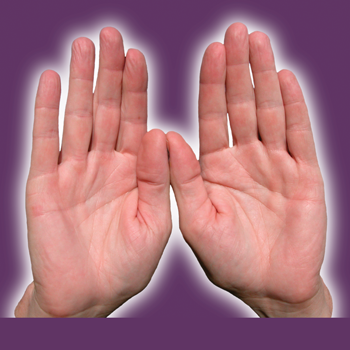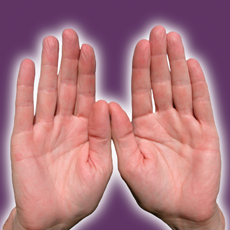by Dawn Fleming
As a Reiki Master Teacher, it is a great honor for me to teach Reiki and to pass on attunements to others. It is the best career I could have ever chosen—or that chose me. I have been teaching all levels of Usui and Karuna Reiki® for over 13 years and have been working with various energy modalities since 1989. My goal as a teacher is to help students become competent and confident Reiki healers and to nurture and guide them so that they may fully develop their capacity to work with energy.
Having participated in many holistic health classes, I am aware that there are numerous approaches to teaching energy-related classes. I have observed classes and teaching styles that are excellent and those that are less effective. Students who gain only a limited understanding of Reiki due to poor teaching are not as likely to practice or return for future classes. I share here some of the insights I have gained through years of teaching, and I offer key points to consider in the development of Reiki classes that will effectively support the Reiki student’s professional growth.
Class Duration
What is the right amount of time for a class? When I am reading the listings for Reiki I classes in the local New Age magazines I see that some of the classes are only four hours long while others are two full days. Remember that most of those attending a Reiki I class are at the beginning of their Reiki journey. It is very important that enough time be allotted for this training. Developing students is not just about giving the Reiki history, principles, hand placements and attunements in a quick way. It is about laying a foundation of knowledge that students will build on. Many students who enter a Reiki I class have never had any exposure or experience with energy. This makes it necessary for the Reiki teacher to set learning objectives that transform the esoteric concepts into concrete information that can be defined and experienced.
It is important to provide a basic understanding of the auric field, chakras, the flow of energy in and out of the body, and how our emotions and life choices impact our health and well-being. The teacher must provide the context for understanding how important a balanced energy field is to one’s overall health and well-being. The teacher’s role is to connect the dots for the students so they understand the mind, body, and energy relationship.
Adequate time is needed for teaching all levels of Reiki. Students need the time to take in, experience the concepts being taught, make them their own, and to be able to practice the techniques on themselves and others. Not only do they need to hear what you say, but also they need to feel what you are teaching.
The teacher must include time for experiential activities to make it real for the students. I have had engineers and computer types in my classes. They come to class very skeptical about this “woo woo” stuff. When they feel the energy move through their hands for the first time, the “woo woo” fades and the knowing that energy can flow through them becomes real. When they feel the heat or the release of energy the first time that they receive Reiki, it validates that something is moving within them.
Allow plenty of time for teaching all aspects of the information and for students to practice what they have learned. Usually one full day is enough time to teach all of the information, give attunements, and to give the students time to practice. Two-day Reiki I classes provide additional time for the students to practice and to get more experience at sensing energy that is around different people. Classes that are less than one day long usually lack enough time for really connecting with students and developing their abilities. The amount of time needed is also a function of the teacher’s ability to teach in a well-organized way that makes effective use of time. An experienced teacher with good teaching skills can teach in one day what a less experienced teacher might need two days to cover.
Practicum
The teacher should factor into a Reiki class enough time for students to give and receive a session. When the students have the opportunity to give Reiki, it builds their confidence and they are more likely to practice on others when they leave the class. If they have not had time to practice during class, they might leave timid and unsure about how to perform a Reiki session and not bother to practice what was demonstrated. During the time allotted for practice, I encourage students to share with their partners what they experienced as the receiver and what the person giving Reiki experienced. The feedback is invaluable. It builds confidence and breaks up the I must have been imaging it thoughts that new practitioners sometimes have when giving Reiki. The practice and feedback give the Reiki neophyte some level of experience. When the student develops confidence, he or she is more likely to come back for additional training.
During the practicum sessions, I walk around and make sure that the students have started the sessions and that they are moving at a reasonable pace (not too fast or too slow). I try to keep all of the pairs moving along so that they end at about the same time. I am there to answer questions and to encourage them when they are feeling doubtful.
Providing practice opportunities outside the classroom environment is another way that the Reiki teacher can support students. Hosting a monthly or twice-a-month Reiki share gives students a valuable opportunity to practice and receive feedback from the instructor and other practitioners. Some Reiki students do not have a lot of family or friends that are open to receiving Reiki. By hosting a Reiki share, the teacher has an opportunity to give students additional experience that will help prepare them for the next level of Reiki training.
Handouts
Another way to get your message across is to provide professional-looking handouts with clear instructions. They serve as guidance and reference for your students when you are not there, and they impact students long after class is over. Make sure that you have someone read over your handouts before you give them to students. They reflect on your teaching and give you an opportunity to make a good impression. If you are not a strong writer, there are manuals you can purchase that are written very well. Check into these and invest in one that follows your philosophy and methodology. It will be worth the investment, and your students will appreciate it. Make sure that you add anything that is missing along with a copy of your Reiki lineage and your contact information. I recommend the manual offered by the ICRT: Reiki, The Healing Touch. It is professionally written and researched and is used by thousands of Reiki Masters.
Sharing Examples and Experiences
Interweave examples into your teaching. Use examples to show the benefits of giving and receiving Reiki. Another way to use examples in teaching is to provide examples of how Reiki can be used in the various professions. If I know that I have nurses attending my class, I will discuss how nurses can incorporate Reiki into their conventional practice. I do the same when I teach massage therapists, acupuncturists or social workers. Students relate to concrete examples. They make Reiki relevant and add validity to what you are teaching.
Sharing stories of how Reiki has worked for you or your clients (leaving out names for privacy) is a great way to help your students understand how Reiki can assist the healing process. Most Reiki teachers have a lot of stories. Share only the ones that are relevant. Do not take up valuable classroom time telling story after story. I know for myself as a student that teachers who overdo the story telling can come across as egotistical time wasters. Find a balance in what you share regarding stories and interweave the stories appropriately. Many students will relate to the stories, examples, and sharing, and will be encouraged to think of similar situations in which they can use Reiki.
This is an excerpt from the complete article that appeared in the Fall 2008 issue of Reiki News Magazine.







